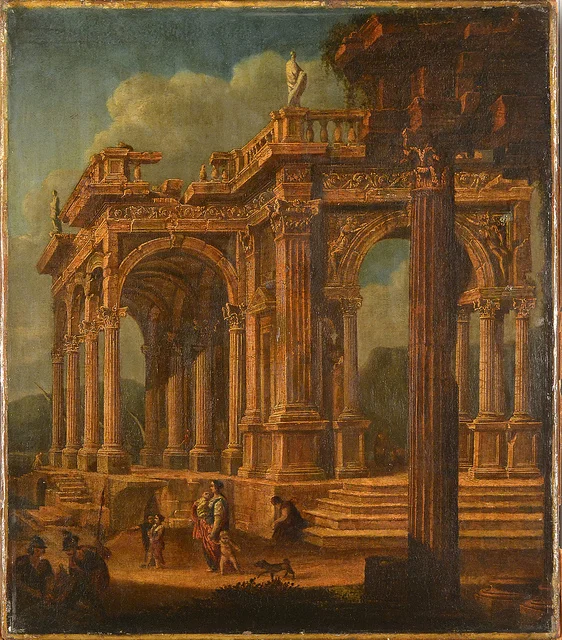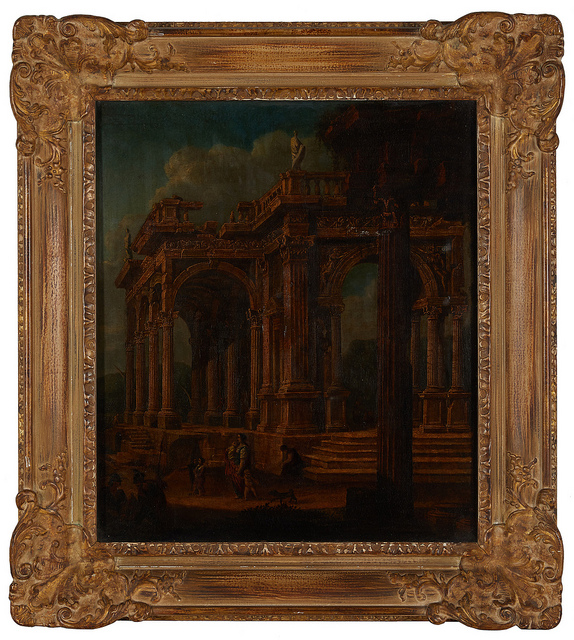As the weather grows colder here in Chicago, we are constantly dreaming of our next getaway. One classic that captures our wanderlust is Audrey Hepburn’s “Roman Holiday.” Unfortunately, Rome is a little far, but luckily, we had the opportunity this month to watch the treatment of a Greco-Roman painting instead.
Before Treatment
This painting came to The Center with a thick layer of natural varnish that discolored so much over time that it was difficult to make out the scene, much less any previous repairs. Normally, a conservator would be able to accurately pinpoint old repairs using ultraviolet light to differentiate areas of repaint from the original paint, but the heavy varnish completely obscured the surface under UV. Nonetheless, one of our painting conservators, Michael Young, was able to discern that the paint surface had been previously repaired. Even so, the true extent of the repaint was unexpected.
After surface cleaning
After initial surface cleaning, the process of varnish removal began using appropriate solvents. Soon, the muddy greens and browns in the sky and buildings transformed into brilliant pastel blues and coral colors. Unfortunately, along with the varnish came the overpaint of previous repairs, revealing extensive historic areas of loss throughout the entire painting. The removal of the overpaint also revealed the existence of a figure in the lower right, in front of the steps, that had been completely covered over by a previous restoration. Lower legs and a few hints of a red cape were the only elements remaining of what appeared to be a soldier.
The revealed figure in the lower right
Varnish removed on left half.
The same image under UV light showing how much the varnish fluorescence obscured any old repaint.
Once the varnish and overpaint had been completely removed, the painting conservator was able to identify areas of instability in the paint layer and consolidate those areas using a conservation adhesive. Luckily, the areas of loss to the paint surface were minor; however, many areas of old fill material needed to be removed and refilled, as the old fills were not level. The end result became a patchwork of white repairs requiring inpainting.
After refilling old fills
Typical inpainting requires conservators to only paint the loss matching it to its surrounding area. That is one of the major differences between modern conservation and the historic practices of overpainting. However, discovering the remnants of a figure beneath old overpaint presented a challenge. Would it be more appropriate to invent the remaining figure, or paint out the few remaining original fragments? Which option better preserves the artist’s original intent? Sometimes, there are no easy answers in conservation. In this case, since the conservation paints are easily reversible, creating a faint approximation of a soldier in the style of the other soldiers was considered acceptable.
The verso before treatment included acidic materials.
During treatment, our conservators worked on the piece unframed.
Verso after treatment with a new, acid-free backing board.
After completing treatment, the painting was reinstalled to its original frame, which itself underwent minor repair due to scratches and losses. Finally, it was returned to our client, who can now enjoy a Greco-Roman holiday everyday.
Before Treatment
After Treatment












